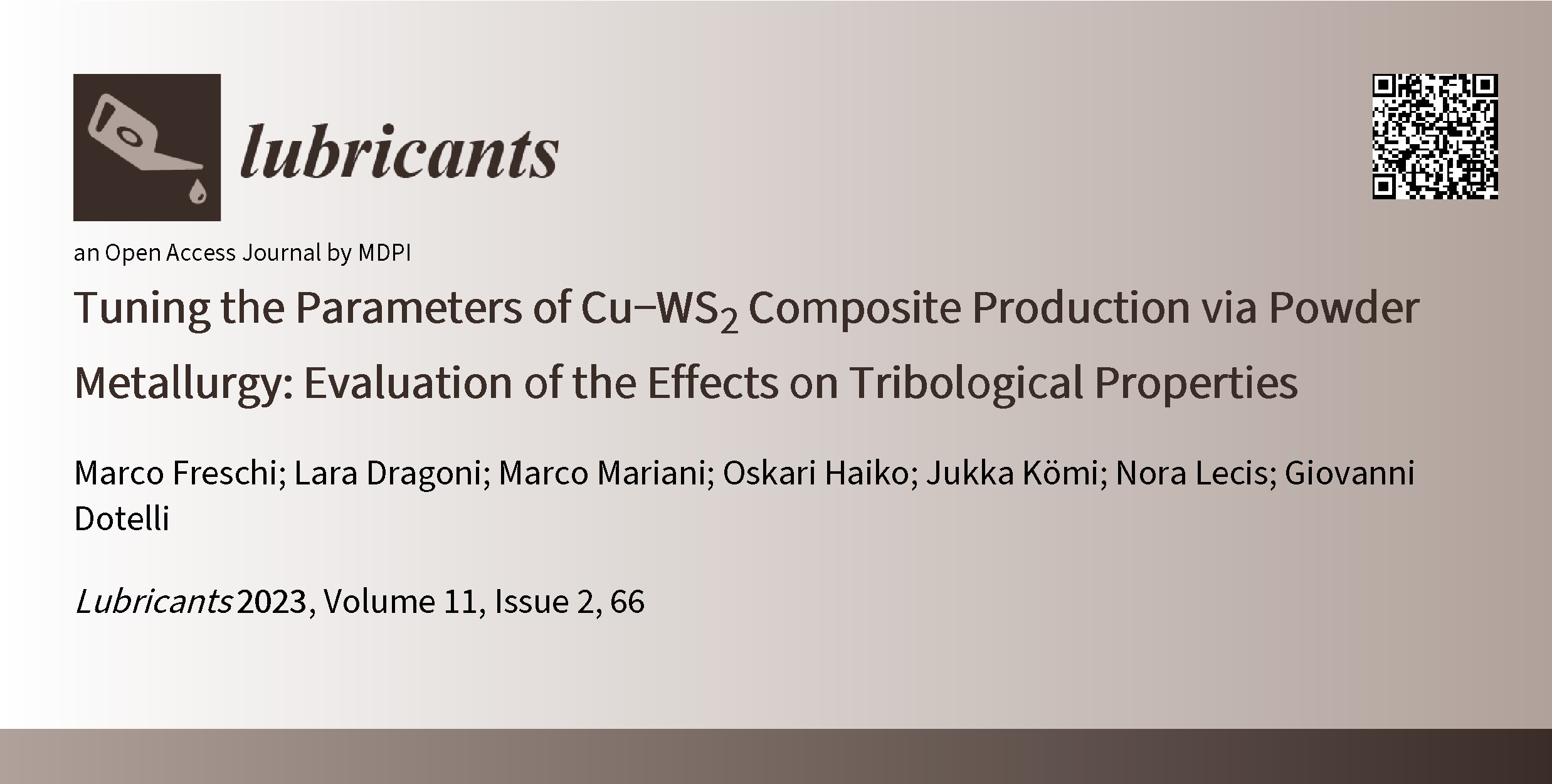M. Freschi, L. Dragoni, M. Mariani, O. Haiko, J. Kömi, N. Lecis, G. Dotelli
Lubricants 2023, 11(2), 66
https://doi.org/10.3390/lubricants11020066
Metal matrix self-lubricating composites exhibit outstanding performance in various environments, reaching the required properties by modifying the reinforcement−matrix ratio and the production method. The present research investigated the effects on tribological performance and electrical properties of different pressure loads, maintaining pressing time, and sintering temperatures during the production of copper–10 wt% tungsten disulfide (Cu−WS2) composite via powder metallurgy. Moreover, additional thermo-mechanical treatments were evaluated, namely second pressing and second sintering steps. The density and the hardness of the produced composites were measured, as well as the electrical resistivity, considering sliding electrical contacts as possible employment. The outputs of the wear tests were considered together with the analysis of the wear track via scanning electron microscopy and confocal laser scanning microscopy to understand wear mechanisms. Different production routes were compared in terms of electrical resistivity, wear coefficient, and specific wear rate, calculated by the confocal laser scanning microscopy, and friction coefficient, measured during the wear test. The main results highlighted that the increase in sintering temperature was detrimental to the hardness and tribological properties; higher load and additional pressing step determined a general improvement in the tested properties.

